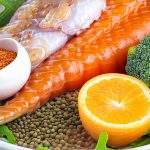Fiber is undeniably essential for overall health. It aids in digestion, promotes gut health, helps regulate blood sugar levels, and can even contribute to weight management. However, for individuals with overactive bladder (OAB) or interstitial cystitis (IC), increasing fiber intake can be a tricky proposition. The very properties that make fiber beneficial – its bulk-forming nature – can sometimes exacerbate urinary symptoms. This is because the digestive system’s activity directly impacts the pelvic floor muscles and surrounding organs, including the bladder. What many don’t realize is that not all fiber sources are created equal when it comes to bladder health; some are far more likely to cause issues than others. Finding a balance between reaping the rewards of dietary fiber and minimizing urinary distress requires careful consideration and mindful food choices.
The key lies in understanding soluble versus insoluble fiber, and how different foods impact individual sensitivities. Many people simply increase their overall fiber intake without paying attention to the source, leading to unwanted consequences. It’s also vital to remember that everyone responds differently; what triggers one person’s bladder may not affect another. This article aims to provide a comprehensive guide to daily fiber sources specifically chosen for those navigating bladder concerns, focusing on options that are less likely to overload or irritate the bladder and offering practical strategies for incorporating them into your diet without triggering symptoms. It’s about finding sustainable ways to enjoy the benefits of fiber while prioritizing pelvic health.
Navigating Fiber Types & Bladder Sensitivity
The distinction between soluble and insoluble fiber is paramount when managing a sensitive bladder. Insoluble fiber, found abundantly in wheat bran, whole grains, and many vegetables, adds bulk to stool and speeds up digestion. While helpful for preventing constipation, this rapid transit can sometimes put pressure on the bladder, leading to urgency or frequency. Conversely, soluble fiber dissolves in water, forming a gel-like substance that slows down digestion and helps regulate blood sugar levels. Sources include oats, barley, apples, citrus fruits, and legumes. This gentler approach is generally better tolerated by those with OAB or IC because it doesn’t create the same level of pressure on the pelvic floor.
However, even within soluble fiber categories, sensitivities can vary greatly. Some individuals find that certain types of fruit, even if soluble-fiber rich, contribute to bladder irritation due to their acidity or water content. The goal isn’t necessarily to eliminate insoluble fiber entirely (unless specifically advised by a healthcare professional), but rather to prioritize soluble sources and carefully monitor how different foods impact your individual symptoms. It’s about identifying personal triggers and adjusting dietary choices accordingly. This often involves keeping a detailed food diary, noting both what you eat and any associated bladder symptoms. If you’re looking for ways to manage overall health while being mindful of your bladder, consider incorporating gentle detox habits into your routine.
The amount of fluid intake also plays a crucial role. Fiber requires water to function properly; without adequate hydration, it can actually worsen constipation and potentially increase bladder pressure. So, increasing fiber intake always needs to be accompanied by increased water consumption. It’s a synergistic relationship where one supports the other. Aim for at least eight glasses of water per day, and even more if you are physically active or live in a hot climate.
Gentle Fiber Sources for Daily Consumption
One excellent starting point is incorporating cooked vegetables into your diet. Raw vegetables, while nutritious, often contain higher levels of insoluble fiber and can be more challenging for sensitive bladders. Cooking softens the fibers, making them easier to digest and less likely to cause irritation. Steamed or boiled carrots, green beans, and squash are generally well-tolerated options. Similarly, sweet potatoes offer a good source of soluble fiber and vitamin A, but should also be consumed in moderation due to their natural sugars.
Beyond vegetables, oats are a fantastic choice for breakfast. Oatmeal, prepared with water instead of milk (dairy can sometimes be an irritant), provides a gentle dose of soluble fiber without the harshness of bran-based cereals. Consider adding small amounts of blueberries or applesauce – both relatively bladder-friendly fruits – for added flavor and nutrition. Avoid toppings like raisins or nuts, which might contribute to digestive discomfort. Remember, portion control is key; even healthy foods can cause issues if consumed in excessive quantities.
Finally, well-cooked white rice can be a surprisingly beneficial fiber source for those with OAB/IC. While often avoided due to its lower nutrient density compared to brown rice, the refined nature of white rice means it contains less insoluble fiber and is easier on the digestive system. It provides a calming base for meals without putting undue stress on the bladder. Pairing it with steamed vegetables and lean protein creates a balanced and bladder-friendly meal option. To learn more about creating balanced meals that are kind to your bladder, explore comforting meal options.
Incorporating Fiber Gradually & Monitoring Symptoms
Sudden increases in fiber intake can be disastrous for anyone, but particularly so for those with bladder sensitivities. The digestive system needs time to adjust, and rapidly increasing bulk can lead to bloating, gas, and ultimately, increased pressure on the bladder. Instead, introduce fiber gradually over several weeks or even months. Start with small portions and slowly increase the amount as your body adapts. A good rule of thumb is to add just one new high-fiber food per week and observe how it affects your symptoms.
A food diary is invaluable during this process. Record everything you eat, along with any associated bladder symptoms – urgency, frequency, pain, or discomfort. Be specific about the timing and severity of the symptoms. This will help you identify potential trigger foods and adjust your diet accordingly. Don’t just focus on fiber sources; also pay attention to other potentially irritating substances like caffeine, alcohol, citrus fruits, and artificial sweeteners. A detailed food diary can complement increased awareness of triggering foods.
If you experience a flare-up of bladder symptoms after increasing fiber intake, don’t panic. Simply reduce the amount of fiber you are consuming and give your system time to recover. It may be necessary to temporarily revert to a lower-fiber diet until things calm down. Patience is key; finding the right balance takes time and experimentation.
Beyond Food: Lifestyle Factors & Professional Guidance
Diet is only one piece of the puzzle when it comes to managing bladder health. Lifestyle factors like stress management, regular exercise (avoiding high-impact activities that put pressure on the pelvic floor), and maintaining a healthy weight all play significant roles. Chronic stress can exacerbate OAB symptoms, so incorporating relaxation techniques like yoga, meditation, or deep breathing exercises can be incredibly beneficial.
Regular, gentle exercise – such as walking or swimming – strengthens the pelvic floor muscles, which support the bladder and urethra. However, avoid activities that place excessive strain on the pelvic area, like running or jumping. Maintaining a healthy weight reduces pressure on the bladder and minimizes the risk of leakage. To find fitness plans that won’t aggravate your bladder, consider gentle options.
Crucially, this information is not intended to replace professional medical advice. If you are experiencing symptoms of OAB or IC, it’s essential to consult with a healthcare provider – ideally one specializing in pelvic health. They can provide a proper diagnosis, rule out other underlying conditions, and develop a personalized treatment plan that addresses your specific needs. A registered dietitian can also offer guidance on creating a bladder-friendly diet tailored to your individual sensitivities and preferences. Remember, taking a proactive approach to both dietary choices and overall lifestyle is the best way to manage bladder health and improve quality of life.
To further support your pelvic floor health, explore minimalist daily habits that can make a significant difference. And if you’re looking for additional ways to manage symptoms, consider learning about natural diuretics that won’t further irritate your bladder.





















